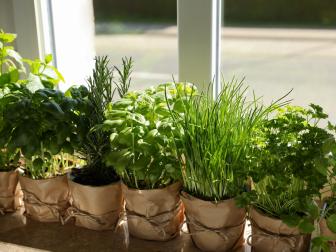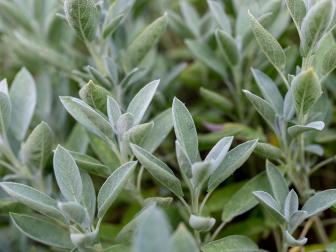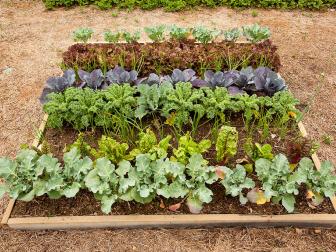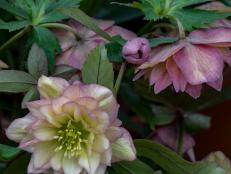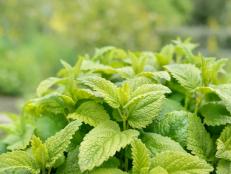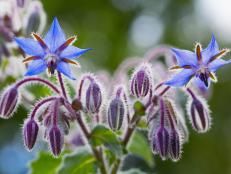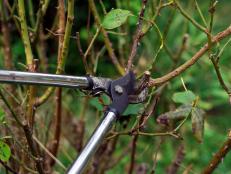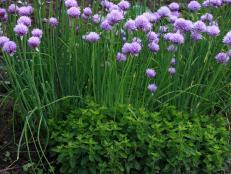Tips for Growing Herbs in Winter
Learn which herbs can grow outdoors in the winter, along with tips on tending an indoor herb garden.
Make cold-weather mealtimes memorable by enhancing dishes with winter herbs. You might harvest fresh from the garden, tend to a container tucked into a protected corner, or snip your greens from a windowsill garden. No matter how you grow them, winter herbs taste incredible. Learn which winter herbs work best outdoors, along with tips on tending an indoor crop.

Peter Turner Photography
Rosemary (Salvia rosmarinus) and thyme (Thymus vulgaris) can thrive during the winter months in Zones 7 to 10.
Herbs That Can Grow Outside in the Winter
Many winter herbs thrive easily in the great outdoors in Zones 6 and warmer. The list includes sage, common thyme, oregano, chives, chamomile, mints, lavender and tarragon. Even in Zone 5, if you toss a frost blanket over some of the hardiest herbs, like thyme, oregano, and mints, you can sneak beneath the cover and harvest when weather permits. The harvest may be on the meager side (it’s not wise to take more than one-third of the plant), but in the depth of winter, any fresh greens are a treat when you live where winter brings snow and cold.
In warmer zones, gardeners usually plant winter herbs — the ones that thrive in cooler weather — during fall. It’s a good idea to tuck winter herbs into the landscape in a spot that’s easily accessible from your home. This not only makes harvest quick on chilly days, but plantings near your house also benefit from the milder microclimate your home creates.
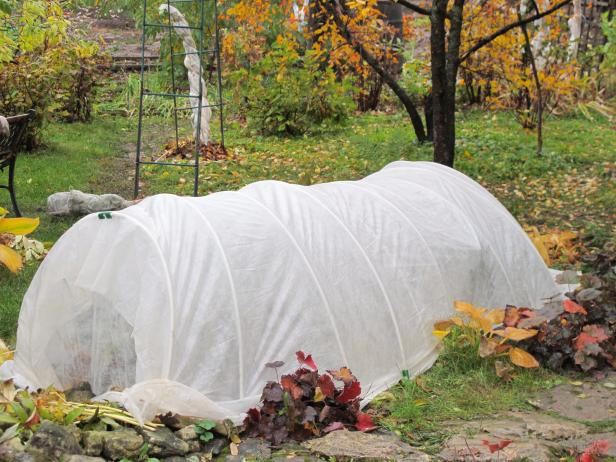
photowind
Use a row cover to protect hardy plants and herbs from frost in wintertime.
Consider growing a few of these winter herbs in containers that you can drag into a garage or shed if temperatures take a stern nosedive. You can also keep a frost blanket or pot cover handy to toss over containers on the coldest nights.
In colder zones, winter herbs are best raised indoors on a sunny windowsill. Good candidates for indoor harvest include a variety of herbs, many of which you can start outdoors in pots before hard freezes zap the garden. This list includes oregano, sage, thyme and chives. Dig a small clump of these herbs in late summer and tuck it into a pot that you’ll shift indoors as late fall arrives. You can also handle parsley this way or simply sow it from seed indoors.
13 Easy Herbs to Grow Indoors 14 Photos
Growing herbs indoors for year-round use is fun, gratifying and easy.
Basil starts easily from seed indoors, as long as it’s in a bright window. South-facing is ideal. Other winter herbs that prefer the strong light of a south-facing window include rosemary, sage, chives and oregano. A potted bay or rosemary plant can shift indoors whenever temperatures dictate. Both of these plants benefit from bright light in winter. Bay needs good air circulation to stay in tip-top shape; rosemary needs cool nights in the 50s.
To transition chives and tarragon indoors, pot a clump in late summer and allow leaves to die back with frost. Trim dead leaves, and bring the pot indoors to a cool spot for four to five days. A cool basement or attached garage works fine. After the cooling period, place the pots in a bright window, water if the soil is dry, and wait for growth to resume.
The Best Perennial Herbs 20 Photos
Count on perennial herbs to yield a harvest of flavor year after year.
Winter Gardens
Brush up on a few winter gardening ideas to give your green thumb a workout all year long.







